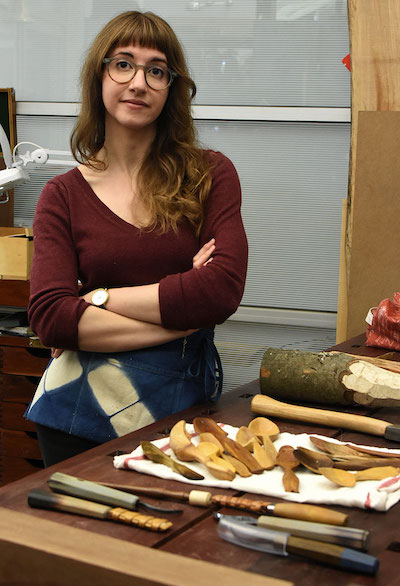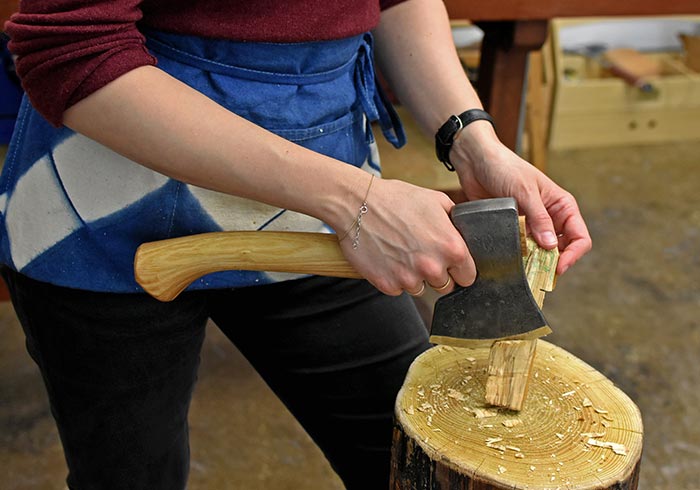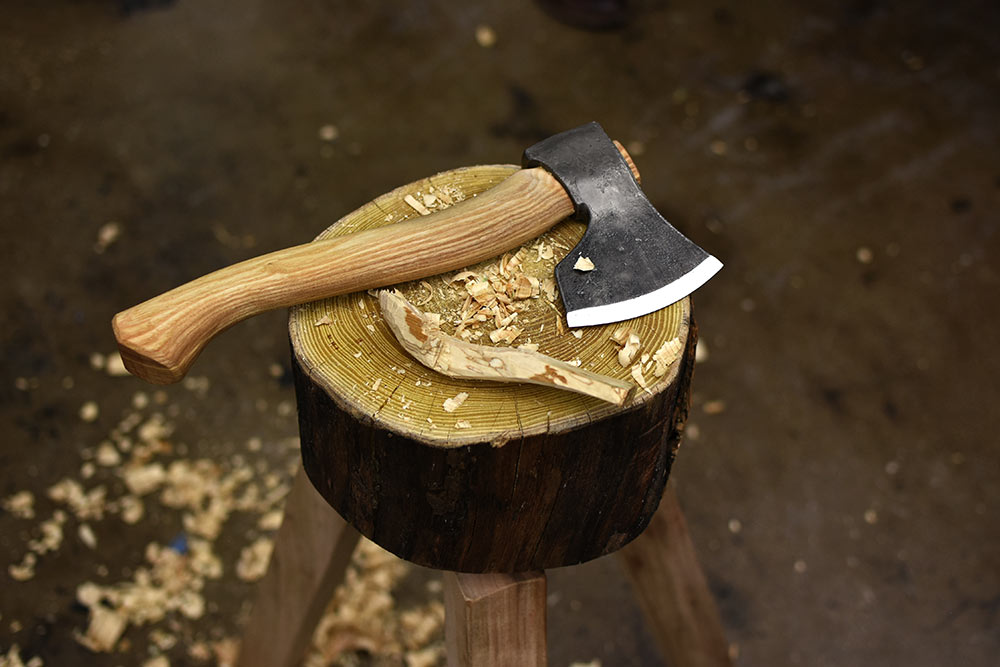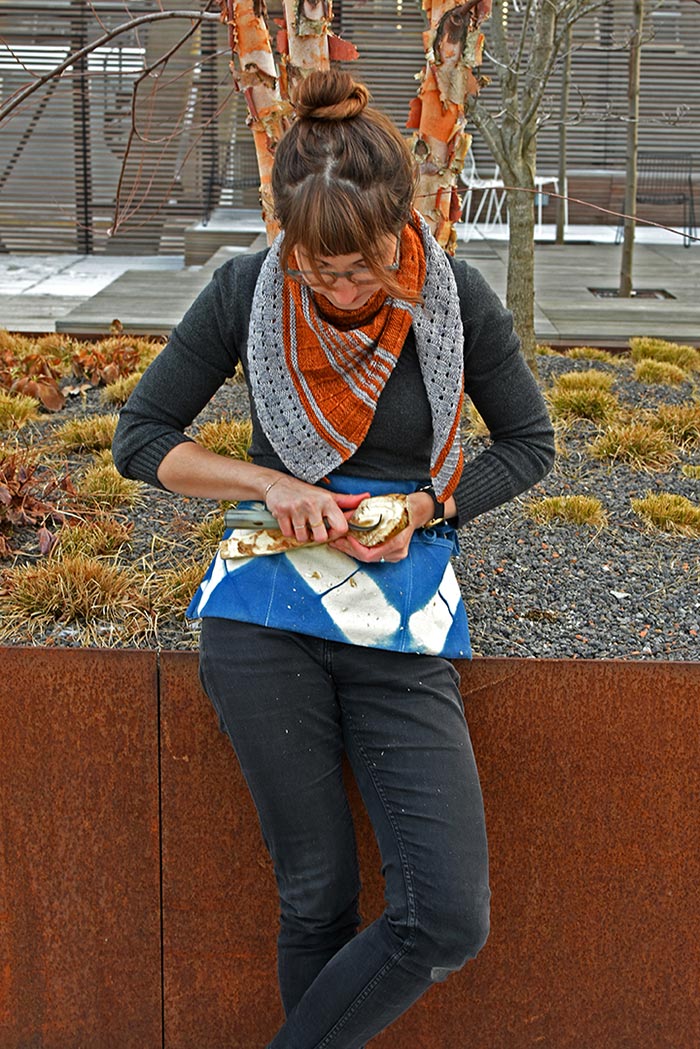
Japanese Garden Tools Vs. American: What’s the Difference?
You may have seen Japanese gardening tools popping up more in stores and online. Sure, they&rs… Read More


I'd like to introduce myself: I’m a hobbyist woodworker living in New York City. Wait, I know, bear with me here. I don’t rent studio space and I don’t own power tools, there’s no second home in the Catskills. A year or so ago I took up greenwood working, and I’ve been able to engage with the craft of carving from the comforts of my (small) home. My setup may not look like the hashtag-spooncarving photos that have been taking over your social media feed—I don’t have the luxury of a shed or garage where wood chips pile up on the floors and fresh cut logs are neatly stacked—but there’s a certain romance to big city carving. When the days are long and when I can get home from work just early enough to catch the last few hours of daylight, I take a chair and a chopping block to the roof of my Brooklyn apartment building, tie on my apron, unsheath a sloyd knife, and while the sun sinks into the Manhattan skyline and starlings fill the air above my head, I can lose myself in the act of finding form and design inside a slim silver of wood.
Greenwood carving is one of several pursuits of mine, and the way I identify depends on perspective. If we’re measuring by a majority of time, I’m a graphic designer, and I design book covers for Penguin Random House. If we’re looking at recreation, I’m a rock climber with a passion for travel and the outdoors. If it comes to hobbies, I’ve been increasingly identifying as a greenwood carver and an organizer in the growing community of greenwood workers in the New York City area.

In some ways, finding greenwood working feels like coming full circle. As a child, I spent summer days hanging out in the garage of my family’s home in the Los Angeles suburbs, watching my dad build everything from chairs to kayaks to simple telescopes. I learned to use the lathe and the scroll saw and did some simple basswood carving. I had a knack for other forms of craft, and the visual arts appealed to me. As a teenager, my passion became drawing and painting. I was accepted into school and pursued illustration and graphic design, and I moved to the east coast as soon as I graduated.

A few years into living in New York City, I hit a wall. A series of challenging events in my personal life prompted me to pause and take an assessment of my path: for the years that spanned my late teens and early twenties, I’d pushed relentlessly to build a portfolio, earn a degree, and land a career. There was no free time—my entry-level salary did not cover the cost of living, and so my weekends would be spent doing freelance work or teaching children’s art classes in south Brooklyn. The city didn’t fail to deliver on its promise of forcing a hustle at breakneck pace, and I had not imagined the toll it would take on me. I longed for balance, but I didn’t know how to achieve it, and I felt ashamed to be wanting more when I knew how fortunate I was to have a job that creatively fulfilled me.
I realized that I had never before spent such sustained time in the city. Even though I grew up in an urban area, my family went hiking and camping a few times a month, and nature was a huge part of my upbringing. I realized had to find a way to reinvigorate that part of myself that had been forced dormant while I spent years singly focused on building a career.
With that realization, things then started to change with a cohesion that surprised me. On a whim I signed up for a rock climbing class at a local indoor gym, and after a few hours on the wall I was completely hooked. I started exploring hikes in the Hudson Valley that are accessible by public transportation, and I joined a local climbing club and learned to climb outdoors. I started to make friends with similar passions, and I began camping, climbing, and traveling regularly.
Around this time I received copy of Wille Sundqvist’s Swedish Carving Techniques and a Morakniv sloyd knife. Both were gifts from a friend who knew about my childhood experiences with wood working, and had learned about greenwood carving through social media. I realized that the hobby would dovetail nicely with my outdoors adventures, and I started bringing carving tools on camping trips.
I soon learned that greenwood carving in the city was not without its own hurdles. Sourcing wood was difficult, and in the beginning I carved a lot of foraged birch that was not so much spalted as it was completely rotten. Foraging wood in city parks is not allowed, and the first few things I carved were delicate scoops made from thin branches that I could inconspicuously gather. Worm holes rendered most of my projects decorative instead of functional. I stayed determined, though. As a person who spends hours of each day in front of a computer, moving elements on a flat plane and back-lit screen, I was so compelled by the act of designing in three dimensions, on a tangible surface. I delighted in being able to learn as much from my fingers traversing the form as from my eyes taking in shape and symmetry, and the act of removing material with an axe and knife was wholly absorbing in such a way that I could easily block out stray thoughts and distractions. I believed that if I stuck with it, I’d eventually find a way past the obstacles and inconveniences of being a city woodworker.
Last summer, and for the second time in the space of a few years, the pace of my days gained a new momentum. I attended a gathering called Greenwood Fest, a multi-day roster of classes and demos, hosted by Plymouth Craft in Massachusetts. There I met fellow Brooklyn woodworker Ben Gancsos, and by the time the festival ended, we left with vague plans to start a local gathering for New York City carvers. Fast forward to the present: we’ve held seven meetings so far, and have met dozens of local carvers of all levels of skill and all different backgrounds.

The speed to which this took off has been dizzying at times. I’ve been wrestling with some degree of impostor syndrome—I helped to start the club not because I’m an expert, but because I’m a beginner seeking the support of a community. In spite of my inexperience, I’ll frequently find myself in a position of offering advice to club attendees who are brand new to the pursuit. I’ve realized, with relief, that no one’s judging. Part of the joy in greenwood carving is that it doesn’t require a huge investment of money or technical skill, and so some of us come from backgrounds that have nothing to do with formal woodworking. In sharing my experiences with an audience, my hope is to bring an uncommon perspective to the pursuit, and to hopefully encourage others, regardless of their woodworking or craft background, to consider picking up a straight knife and a fresh block of wood.